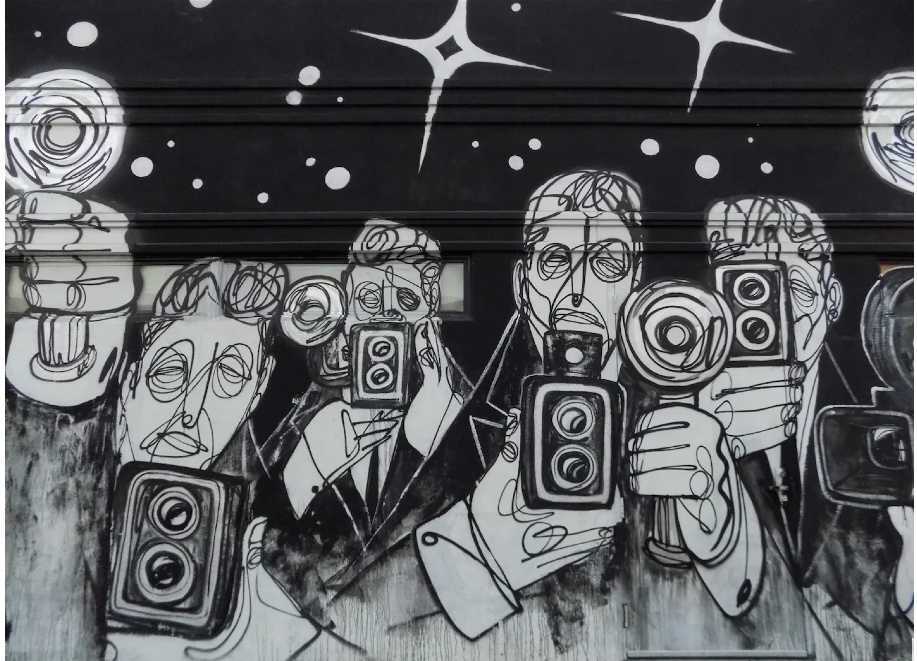Art is one of the most liberal concepts in society. It derives from purpose, ideas, and inspiration. Throughout the years, art and intellectual property laws have established a close relationship. Intellectual property laws award creators a right in their work, granting the creators with numerous rights and protections. However, when inspiration produces a work that too closely resembles a protected pre-existing work—legal questions and battles between freedom of expression and property rights rise.
Copyright law protects original works of authorship as soon as an author fixes the work in a tangible form of expression. These works include paintings, illustrations, musical compositions, etc. A work is considered original when it has been independently created by a human author and has a minimal degree of creativity.[i] One becomes the owner of a copyright when one creates the original work and fixes it. As an owner, you have several exclusive rights, such as excluding anyone else from using your work. Copyright laws allow copyright owners to file a claim for copyright infringement if they believe someone has used their original work without permission.
Fairness is a vital subject addressed in a copyright claim. Copyright laws sometimes allow for the fair use of copyrighted work without the creator’s permission. When determining fair use in copyright, the essential question is whether the work has been transformed enough from the pre-existing work to give it a new or distinct meaning.[ii]However, this is a difficult question. Part of the problem is that copyright laws create a “tricky situation” where the law says that only the author has the right to create derivative works but also allows a copyrighted work to be used for fair use purposes.[iii] Recently, a lawsuit has ensued between the creative freedoms of artists and copyright. More specifically, between copyright infringement and fair use of a pre-existing work.
On October 12, 2022, the Supreme Court heard oral arguments in Warhol Foundation v. Goldsmith. At the heart of the case is the question of whether Andy Warhol’s unauthorized use of Lynn Goldsmith’s photograph in various artistic works is sufficiently transformative to constitute a new work. The Court is set to determine whether the work is entitled to protection under the fair use doctrine, thereby not copyrighting Goldsmith’s work. The Court’s ruling on this case is significant as it could reshape the fair-use defense to copyright infringement cases— ultimately affecting digital media and its creators.[iv]
In 1984, Lynn Goldsmith granted Vanity Fair a specific and limited license to use the black and white photograph of Prince that he had taken in 1981. The license is evidence that Goldsmith was making an effort to ensure the photo would only be used as an artistic reference for an illustration for the 1984 Vanity Fair November issue. Andy Warhol was commissioned by Vanity Fair magazine to make an illustration of Prince for an article. The magazine requested Warhol use Goldsmith’s black-and-white photos as a reference point when creating the illustration for the Vanity issue. However, Warhol went beyond the magazine’s specifications and created a set of 16 Prince silkscreens, which he copyrighted, one of which Vanity Fair used for the article.
In 2016, after Prince died, Vanity Fair’s parent company Conde Nast, conducted a tribute to Prince where they featured many Prince photographs. The magazine paid the Warhol foundation $10,250 to run a copy of the “Orange Prince” on its cover, making no payment to Goldsmith.[v] Subsequently, Goldsmith filed suit against the Warhol foundation, claiming that Warhol had infringed her copyright and was owed millions of dollars in unpaid licensing fees and royalties.
In the lawsuit, the Warhol foundation argued that the Prince series was not only copyrighted but transformative due to the artistic differences between the series and Goldsmith’s original work. In summary, the foundation argued that Warhol merely used Goldsmith’s black-and-white photographs as a building block and therefore does not constitute copyright infringement because it is sufficiently transformative new work.
Currently, courts have disagreed on how to label Warhol’s work. A federal district court judge found that the series is transformative because it conveys a different message from the original work, and therefore is fair use under the Copyright Act. On the other hand, the Second Circuit Court of Appeals disagreed and stated that judges should not “assume the role of art critic and seek to ascertain the meaning of the works at issue.”[vi]
This case highlights the fine line between inspiration and copyright. As such, the Supreme Court’s decision will have a rippling effect on how copyright laws affect creative freedoms. If the Court finds that Warhol’s work was not sufficiently transformative, the decision would set a precedent that favors original artists. This determination would hinder the creative process of artists and inhibit creators who build and derive their work from pre-existing works. Nonetheless, the Court’s decision, which is not expected until next year, will establish a significant precedent for the long-standing conflict between intellectual property rights and creative freedoms.
i See What is Copyright?, Copyright.gov, https://www.copyright.gov/what-is-copyright/ (October 17, 2022, 11:52 a.m.).
ii See Rich Stim, Measuring Fair Use: The Four Factors, Stanford libr. (October 2019) https://fairuse.stanford.edu/overview/fair-use/four-factors/.
iii See Tiffany Hu, 4 Things to Know About Warhol Copyright Battle, Law360 (October 6, 2022, 7:39 PM) https://www.law360.com/articles/1538054/4-things-to-know-about-the-warhol-copyright-battle.
iv See Greg Stohr, Supreme Court Case on Warhol Images Evokes Laughs and a Copyright Debate, Bloomberg (October 12, 2022, 12:47 PM) https://www.bloomberg.com/news/articles/2022-10-12/warhol-prince-supreme-court-case-evokes-laughs-copyright-debate.
v See Nina Totenberg, The Supreme Court meets Andy Warhol, Prince and a case that could threatened creativity, NPR (October 12, 2022, 5:00 AM) https://www.npr.org/2022/10/12/1127508725/prince-andy-warhol-supreme-court-copyright.
vi Id.



